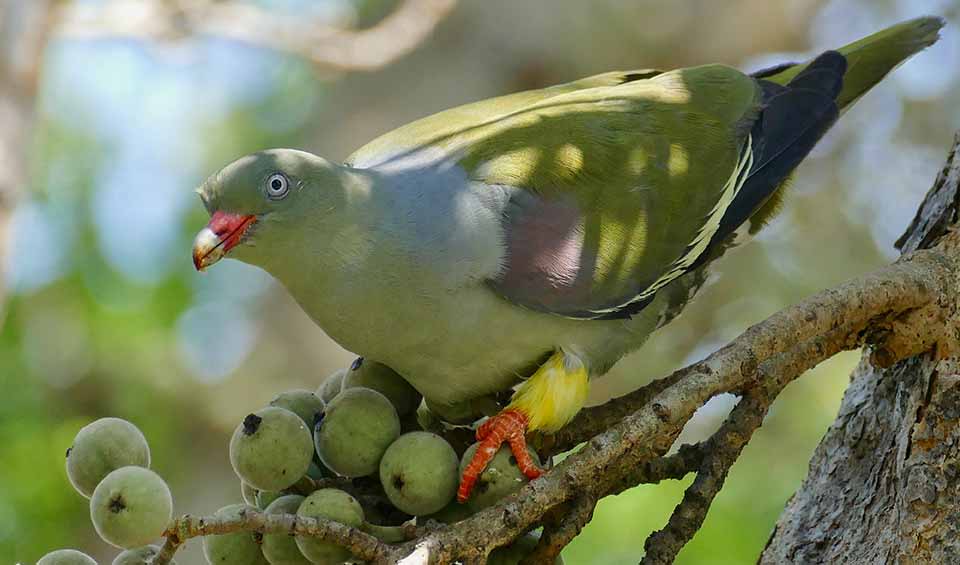Treron – Green pigeons
This genus is filled with the most eccentric-looking pigeons that you’ll ever see
Green pigeons are commonly found in the forests and woodlands of Asia and Africa. These arboreal birds are renowned for their striking green plumage, which provides excellent camouflage among the foliage.
The diet of green pigeons is primarily frugivorous; they feed on a variety of fruits, with a particular fondness for figs, which are abundant in their habitats. The relationship between green pigeons and fig trees is symbiotic – while the pigeons depend on the trees for sustenance, the trees rely on the birds for seed dispersal. As the pigeons consume the fruit, they process the seeds and later deposit them in different locations, thus playing a critical role in the propagation of these trees.
Green pigeons are social creatures and are often observed foraging in groups. This social behavior is not only crucial for their survival, as there is safety in numbers, but it also facilitates finding food resources.
In the mornings, these birds are frequently seen basking in the sunlight at the top of emergent trees. This behavior serves multiple purposes: it aids in thermoregulation and is a social activity that strengthens the bonds within the flock.
Green pigeons are typically monogamous and are most often encountered in pairs throughout the year. When it comes to nesting, they exhibit remarkable cooperation. Their nests are relatively simple structures, often just a platform of twigs placed in a tree, bush, or hedge. Both members of the pair take part in incubating the typically two-egg clutch and rearing the resulting chicks.
The adaptability of green pigeons to environmental changes, particularly those caused by humans, is noteworthy. They have shown a remarkable ability to thrive in altered landscapes as long as fruiting trees are present. Their presence in human-modified environments like gardens and orchards suggests they can coexist with human development to a certain extent.
Species in this genus
African green pigeon
Despite being brightly colored, they’re hard to spot — they sit quietly in treetops, perfectly camouflaged among leaves
Pink-necked green pigeon
One of the most beautiful pigeons



